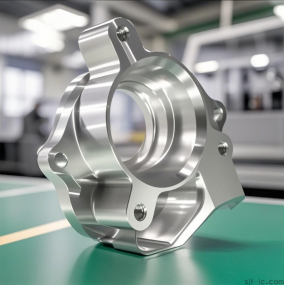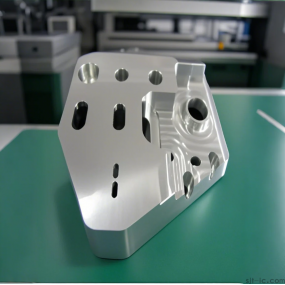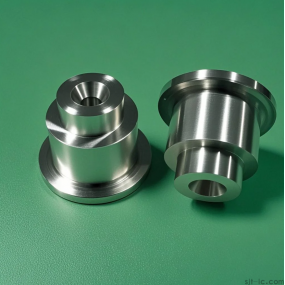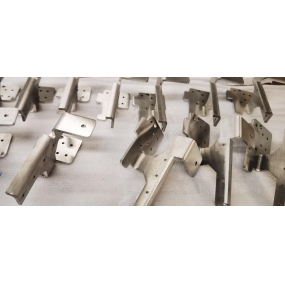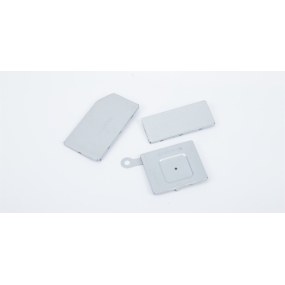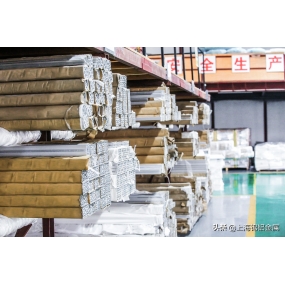Hello everyone! Recently, when chatting with several friends who run CNC Machining factories, the most frequent complaint I heard was: "Competition in this industry is so fierce! Prices are pushed down to rock bottom, customer requirements keep getting higher, and small factories can barely survive!" 😫 I believe many peers share this feeling, right? Especially for small-scale processing factories, they face huge equipment investment, rapid technological updates, unstable orders, and on top of that, the pressure from large factories and low-price competition—their living space is shrinking more and more. So, in the face of such a dilemma, what should we small factories do? Today, combining the current state of the industry, I will share some practical breakthrough ideas with you.

🔍 I. How Intense is the Competition in the CNC Machining Industry?
According to industry reports, although the scale of China’s CNC market is growing (reaching approximately 80 billion yuan in 2023), the competitive landscape is fragmented. The top 5 enterprises account for only 30% of the market share, while the rest is occupied by a large number of small and medium-sized factories. The fierce competition is mainly reflected in the following aspects:
- Pervasive price wars: To compete for orders, small and medium-sized factories often have to passively lower prices, resulting in razor-thin profits.
- Higher technical thresholds: The high-end market is dominated by international brands such as Siemens and Fanuc. Although domestic mid-to-low-end equipment has increased its market share, 35% of core components (such as servo motors) still rely on imports.
- Fragmented orders: There is a growing demand for small-batch, multi-variety processing, which requires high production flexibility. However, small factories often have limited capacity to adjust production.
In my opinion, in such an environment, if small factories only follow the trend of competing on prices, it will definitely be a dead end! They must find their own differentiated advantages.
🛠️ II. Survival Difficulties for Small Factories: Why Is It Getting Harder?
The "survival dilemma of small-scale CNC processing factories" is by no means an exaggeration. The main challenges are as follows:
1. Heavy financial pressure: A medium-sized CNC machine often costs hundreds of thousands of yuan, with a long investment recovery cycle, but financing channels are limited.
2. Difficulty in acquiring customers: Large customers prefer to cooperate with large factories. Small factories are often labeled as "unstable in quality," making it difficult to build trust.
3. Slow technological upgrading: Investments in five-axis linkage, intelligent systems, and other advanced technologies are high, and small factories often cannot keep up.
4. Talent shortage: Experienced senior technicians are retiring, young people are unwilling to enter the industry, and there is a serious gap in senior technical personnel.
I have heard too many complaints about these pain points! But complaining is useless; the key is how to solve them.
🚀 III. Breakthrough Strategies: How Can Small Factories "Carve Out" a Survival Space?
✅ 1. Focus on Niche Segments and Become a "Niche Expert"
Don’t be greedy for breadth! For example, specialize in small medical device parts or precision structural parts for electronic products. By deeply cultivating a niche segment and optimizing quality and delivery speed to the extreme, you will naturally build a good reputation. For instance, some factories only produce aluminum alloy mobile phone middle frames, achieving a yield rate of 99%, and customers even line up to place orders.
✅ 2. "Unite for Warmth": Join Industrial Clusters or Alliances
Fighting alone is weak. Currently, there are CNC machining industrial parks in various regions (e.g., clusters in East China and South China account for 60% of the market). Settling in these parks allows you to share order resources and equipment maintenance services, and even jointly bid for medium-sized projects.
✅ 3. Impress Customers with "Small, Fast, and Flexible" Services
Large factories have long processes and slow responses, which is exactly where small factories can leverage their flexibility! For example:
- 24-hour rapid prototyping: Urgent-order customers love this service.
- Transparent communication: Add customers to groups and send real-time videos to show production progress—this significantly boosts trust.
- Intimate after-sales follow-up: Respond to problems within 2 hours, which is more considerate than the standard processes of large factories.
✅ 4. Asset-Light Operation + Equipment Upgrading Strategies
When funds are tight, be cautious about buying new equipment! You can consider:
- Leasing high-end equipment: Rent five-axis machine tools by project to reduce cost pressure.
- Retrofitting used equipment: Purchase used equipment of mainstream brands and install domestic CNC systems—this offers excellent cost-effectiveness.
✅ 5. Leverage Digitalization to Improve Efficiency at Low Cost
Don’t think that ERP and MES systems are only for large factories! Now, there are many SaaS-based production management tools, with a monthly fee of just a few hundred yuan, which can help you achieve:
- Online order tracking
- Equipment status monitoring
- Automatic cost calculation
This reduces labor waste, and the improvement in efficiency is visible to the naked eye.
📊 IV. Case Reference: The Transformation Journey of a Small Factory
A small CNC processing factory (with 20 employees) was once on the verge of closure. Later, it made the following adjustments:
1. Abandoned general parts production and shifted to the niche market of metal parts for new energy vehicle charging piles.
2. Introduced a cloud-based MES system, shortening the order processing time from 3 days to 4 hours.
3. Allied with local mold factories to share customer resources, increasing order stability by 50%.
Two years later, the factory’s gross profit margin rose back to 25%, and it became a leading regional supplier in its niche segment.
💡 V. My Insights and Suggestions
It is an indisputable fact that CNC machining faces intense competition. However, I believe that as long as small factories find the right positioning and amplify their flexibility advantages, they can still thrive! Finally, I would like to share a few insights:
- Don’t blindly compare equipment: Making good use of existing resources is more practical than going into debt to buy high-end machines.
- Stratified customer management: Focus on serving the top 20% of high-quality customers—they contribute 80% of your revenue.
- Maintain a learning mindset: Attend more industry exhibitions (such as the China International Industry Fair) to understand new technological trends, even if you only observe without investing for now.
I hope these practical tips can help my peers who are striving in this industry! Welcome to share your experiences~ 🙌


 Spanish
Spanish Arabic
Arabic French
French Portuguese
Portuguese Belarusian
Belarusian Japanese
Japanese Russian
Russian Malay
Malay Icelandic
Icelandic Bulgarian
Bulgarian Azerbaijani
Azerbaijani Estonian
Estonian Irish
Irish Polish
Polish Persian
Persian Boolean
Boolean Danish
Danish German
German Filipino
Filipino Finnish
Finnish Korean
Korean Dutch
Dutch Galician
Galician Catalan
Catalan Czech
Czech Croatian
Croatian Latin
Latin Latvian
Latvian Romanian
Romanian Maltese
Maltese Macedonian
Macedonian Norwegian
Norwegian Swedish
Swedish Serbian
Serbian Slovak
Slovak Slovenian
Slovenian Swahili
Swahili Thai
Thai Turkish
Turkish Welsh
Welsh Urdu
Urdu Ukrainian
Ukrainian Greek
Greek Hungarian
Hungarian Italian
Italian Yiddish
Yiddish Indonesian
Indonesian Vietnamese
Vietnamese Haitian Creole
Haitian Creole Spanish Basque
Spanish Basque

